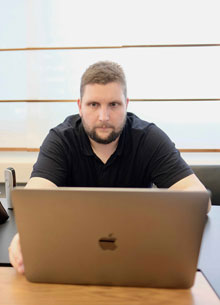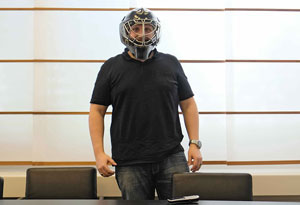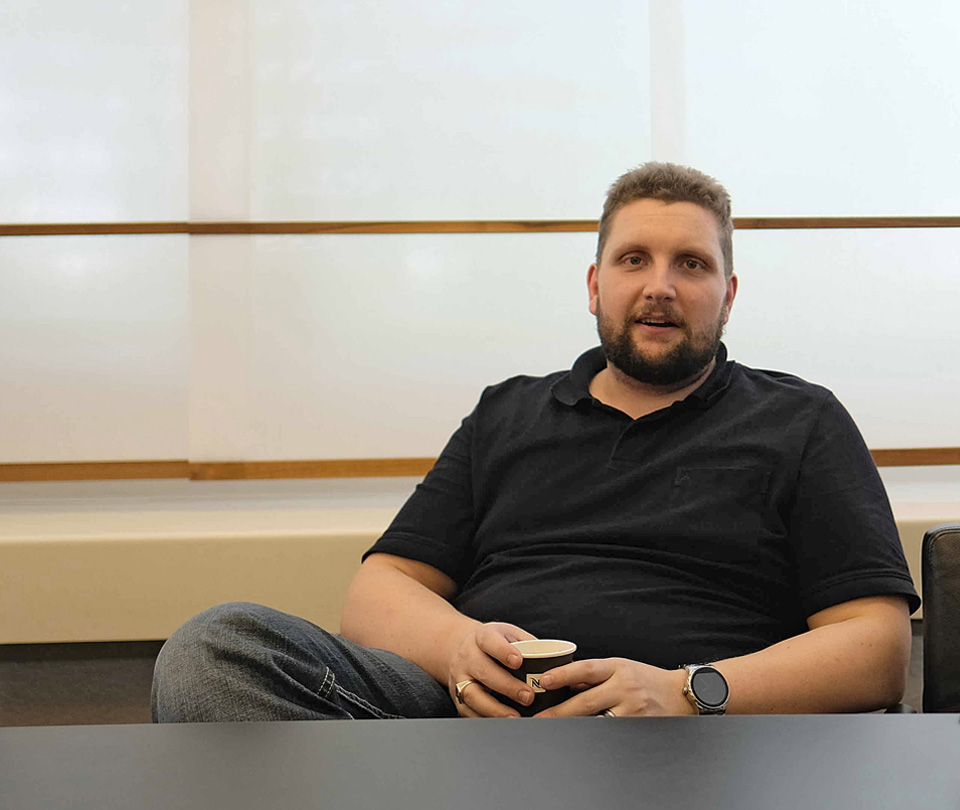
IT – The world’s largest and most important asset manager
There’s probably nothing in the world today that is continually developing at this rapid pace, never stopping for a single day at any stage and completely reinventing itself every six months. For some it’s a blessing, for others a curse; but no one can do without it as it’s essential for all of us. We’re talking about IT. Working with it is a daily challenge. It’s like a temperamental horse, wild and unruly at times. If you don’t understand it, it will inevitably bolt. You have to care for it, keep training it and loving it, so that it’ll do what you want it to do.
Interview with Manuel Ginesta in 2018, Head of Application Development at n c ag, Urdorf – Thomas Gysin
The generic term IT, the abbreviation of information technology, includes all the technical areas involved in electronic data processing – network applications, office communications applications as well as the classic activity of software engineering. The mechanisms of data processing also include the necessary hardware and software. Day to day, we are mainly working on databases, which serve as a central hub in business, retail and industry, in sales, or as a media or information platform that connects everything and everyone, all over the world.
It has to be straightforward, fast and reliable, and it has to be secure.
Basically, a database is meant to make work processes easier for people, to impart knowledge, and to deliver services and products on demand – simply, quickly and as a matter of course. At the same time, these banks store, manage and pass on data – or not, as the case may be. These banks are indeed also custodians of data, a vault whose contents can be compared to hard cash. And as an aside here, it should be mentioned: cash and fixed assets at financial institutions are also managed via IT systems. Seen in this light, IT is now simply the world’s largest and most important asset manager.
The capital stored on databases has to be protected – with no exceptions. This task is performed by servers housed in specially secured rooms. Simultaneously, a constantly updated backup of this data is stored on a second server at a different location – just to be on the safe side.
Security measures also have to keep pace with the rapid progress of new applications.

An application developer can’t sit still in his chair for a second, it is said. In fact, the relentless development of new software is constantly opening up new opportunities that you can’t do without in the competitive market. This is also something wonderful, exciting and extremely interesting. At the same time, however, all new applications require a simultaneous upgrade of security measures. Anyone who is careful might lose a bit of speed until the release of a new update. On the other hand, the risk of a security gap opening up is latent in part or all of the system. Everyone has this dilemma – from private users and small businesses to SMEs, industrial companies, state-owned enterprises and even systemically essential companies. Many try and ignore this, as careful handling of data costs money, which, however, shouldn’t be subject to cost-cutting and struck from budgets.
What would happen if …?
The world would keep turning as if nothing had happened – at least, it would for all those who weren’t affected, Manuel Ginesta smiles. For an SME, however, this would actually be a major disaster. Data just gone – just imagine that for a moment. Yes, sure, you have a backup. But the time when an operating system is down is equivalent to a general strike or a temporary closure of the company. In addition to losing revenue, huge recovery costs would arise, as well as damage to the company’s image and a loss of confidence among business partners and customers.
Even worse than the temporary loss of data are possible virus or even trojan attacks. Here, you first have to find out what else, and above all, who, has been infected and damaged besides your own operating system. The consequences of this would be fatal. We don’t hear of such incidents in the media, or only rarely, only when the really big players get targeted. Like with Bitcoin, for example, when millions in cryptocurrency are stolen again from the database “safe”. Or like when Facebook shares crash and Zuckerberg has to apologize for data leaks in front of a US Congress committee. Or if Russians apparently manage to get into state databases of Western governments to falsify election results.
How secure are the databases at n c ag?

Technically, data at n c ag is just as secure as the security measures are meticulously worked on every day with n c ag’s hallmark attention to detail. He often compares himself to an ice hockey goalie. While the five field players on his team are usually only on the ice for about a minute at a time and then replaced, he spends the entire 60 minutes of the game between the posts making sure absolutely nothing gets past him. It doesn’t matter how broad and tall a goalie is in front of the goal, which may seem small to the untrained eye, the goalkeeper has to have the fastest reactions of all the players. He has to tactically assess exactly how far back or in front of the goal he is, as his opponents rush at him at least ten times faster than he is. A goalkeeper is constantly moving during a match, going left, right, forwards, backwards, and does about 240 knee bends – all the way down and up again. And if he left a gap of ten centimeters between his shoulder and the top of the goal, the puck would definitely go in.

Manuel Ginesta, Head of Application Development
As Head of Application Development, Manuel Ginesta is responsible for the security of the entire IT infrastructure at n c ag. He’s been married for four years to Claudia and is the proud father of one daughter, Aurora. He manages to separate professional life from family life, which you have to, he says. It helps you to perform at 100% when you’re working, and then at home you’re fully focused on being a husband and father.
